After discovering her husband repeatedly using food banks despite their comfortable income, Celine concocts a unique plan to teach him the real value of community resources. Will her eye-opening strategy deepen their understanding or open a rift in their relationship?

A woman sitting on a chair near a window | Source: Pexels
Hi, everyone! My name is Celine, and today I need to vent a little about something that’s been bothering me for a while.
My husband, Kris, and I have been together for 17 years—married life has been mostly wonderful and we’re pretty fortunate financially. We make over $200,000 a year, so we’re not exactly pinching pennies.

A couple enjoying tea at home | Source: Shutterstock
But here’s the kicker: Kris has this thing about being super frugal, to the point of extremes.
Despite our fridge being fully stocked and us having the means to comfortably buy whatever we need, Kris has this habit of hitting up local food banks. And it’s not that he volunteers; he goes there to get food.

A man counting money while holding a pen | Source: Pexels
The first time I caught him doing this, I couldn’t believe my eyes. He walked into the house with bags full of canned goods, bread, and some vegetables.
At first, I thought he’d been shopping at a discount store or something. But no, he had this look on his face, a mix of guilt and defiance. “I saved us a bunch of money.” He said, trying to justify it.
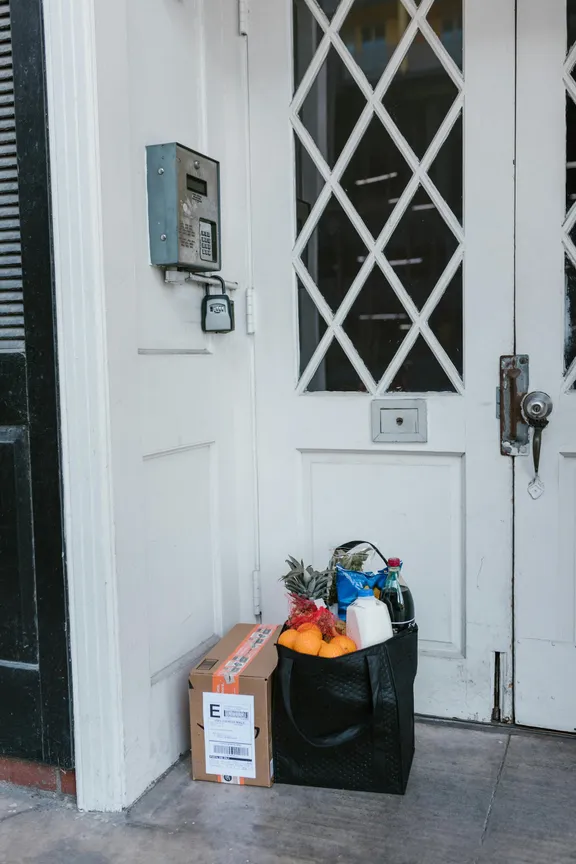
Food packages at the doorway | Source: Pexels
He tries to blend in with those who genuinely need these services. He’d wear his oldest clothes, take our oldest car—the one that seriously needs a paint job—and drive down to the food bank. He acts as though we’re on the brink of financial ruin, which is so far from the truth.

A yellow Sedan parked alongside the road | Source: Pexels
I’ve tried to talk to him about it. I’ve told him that there are people out there who really need those resources.
Moreover, I’ve shown him posts on social media, from local food banks, highlighting the need for donations and how they’re struggling to meet demand. But it just doesn’t click with him. He shrugs and says, “There’s enough to go around.”

A person viewing images on their laptop | Source: Pexels
So today when I opened our fridge—guess what? It was packed with fresh produce and nice cuts of meat.
Confused and a bit upset, I asked Kris where it all came from. He sheepishly admitted, “I went to the food bank again. There was a post on Facebook about a big donation they received, and I thought why not?”

A refrigerator stocked with fruits and vegetables | Source: Pexels
I immediately pulled up the Facebook post he was talking about. People were already commenting, asking if any of the food was left. Unfortunately, they were out of luck—nothing was left.
I showed these comments to Kris, trying to make him see the direct impact of his actions. But he just brushed it off, saying, “Well, they should have gotten there earlier.”
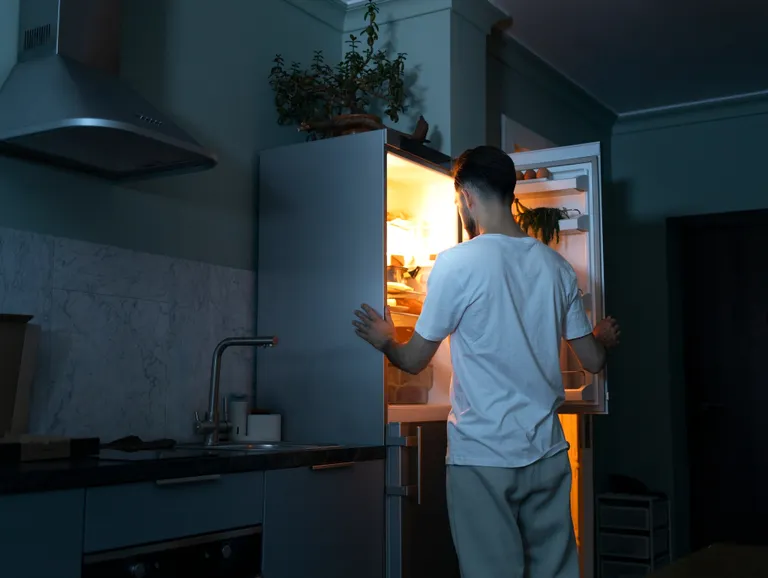
A man looking for snacks in the fridge | Source: Freepik
I was so frustrated. I felt like nothing I said made any difference. But then, an idea hit me—a plan that would hopefully teach him the true value of these food banks to our community.
I reached out to the director of the local food bank, explaining the whole situation. I told them how Kris has been abusing their generosity, despite us not being in need.
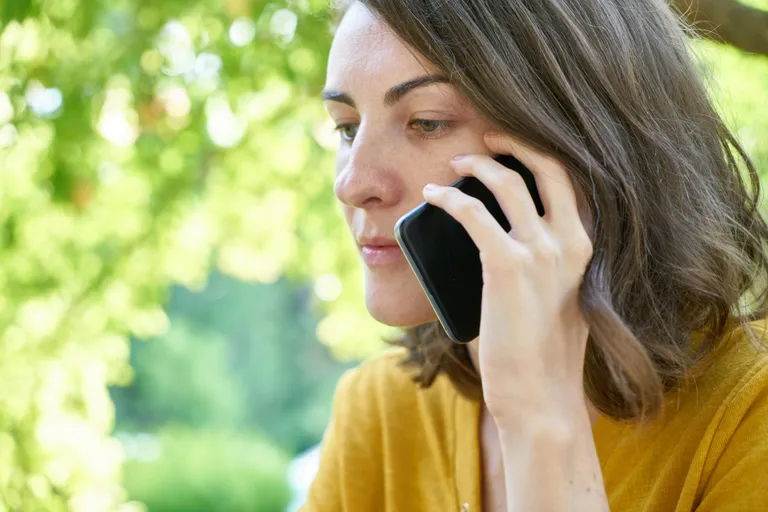
A woman talking on the phone | Source: Pexels
The director, incredibly understanding, suggested a brilliant idea. They proposed that the next time Kris showed up, instead of turning him away, they’d put him to work.
This way, he could really see the kind of need they deal with daily and hopefully, this would make him rethink his actions.

A middle-aged man sitting at his desk | Source: Pexels
The director was incredibly supportive, seeing this as a chance to educate and possibly transform Kris’ perspective. We set everything up and waited for the day he would walk into the food bank again.

A couple having a conversation at home | Source: Pexels
The day I knew Kris would probably hit up the food bank, I nudged him a bit.
“Honey, why don’t you wear your oldest jacket? You know, to look the part,” I suggested, trying to keep my voice casual. He grumbled about it but finally agreed, not knowing he was walking right into the lesson I had arranged for him.

A back view of a man putting on a jacket | Source: Pexels
When he walked into the food bank, instead of the usual quick grab and go, something different happened. He was greeted by name as soon as he stepped in.
The volunteers, who were all in on the plan, gave him a warm but knowing smile and ushered him straight to the back. “Since you come here so often, we’d really appreciate your help in sorting today’s donations,” one of them said.
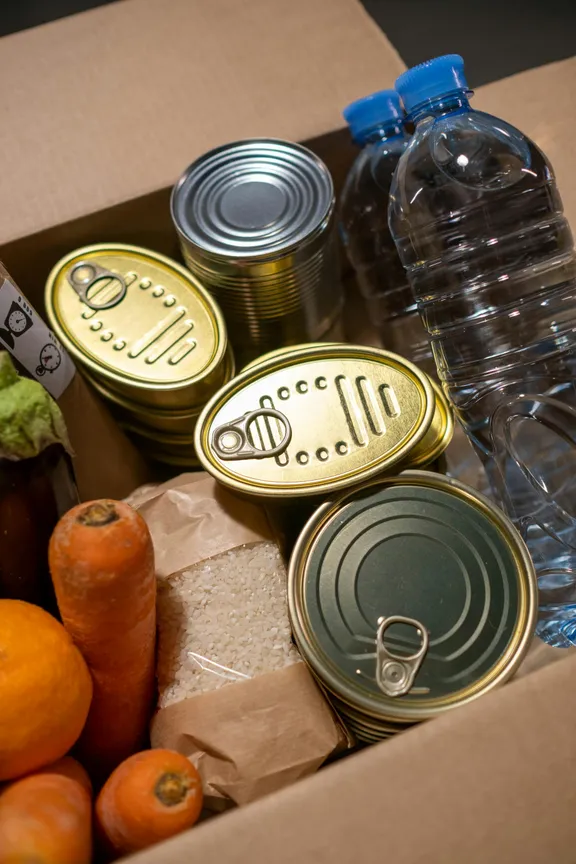
Food donation with cans, water bottles, and fresh vegetables | Source: Pexels
Kris was totally baffled but with all eyes on him, he couldn’t just walk out. So, he spent the entire day at the back of the food bank, sorting through boxes of food donations. It wasn’t the day he had planned.
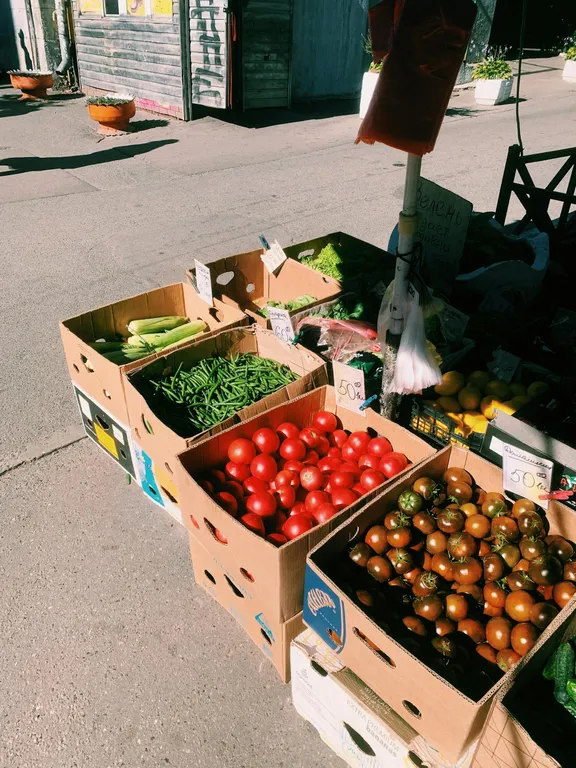
Fresh vegetables in brown cardboard boxes | Source: Pexels
As he worked, he started chatting with the other volunteers and some of the people who came in needing help.
He listened to their stories—families scraping by, single parents working two jobs just to feed their kids, elderly folks whose pensions just weren’t enough.
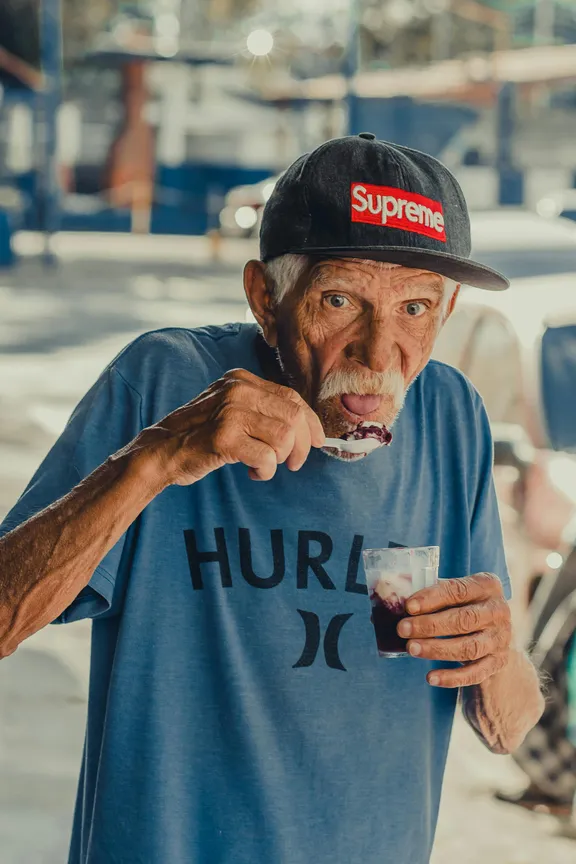
An elderly man eating an ice cream | Source: Pexels
These were the people who really needed the help that the food bank provided, the people Kris had been unknowingly taking from.
It was an eye-opener for him. Being so close to the real struggles of these people, hearing their stories firsthand, it was a whole different world. One he had never truly seen, even though he had been coming to this place for months.
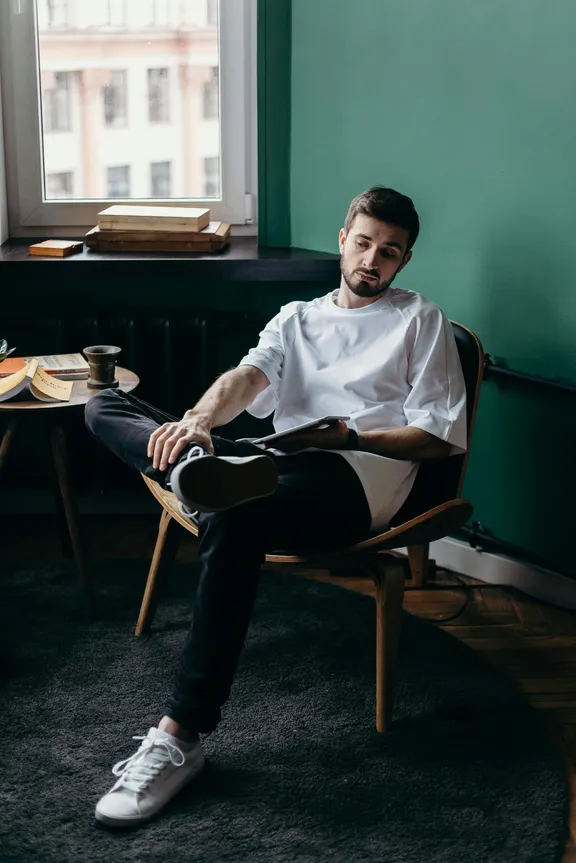
A thoughtful man sitting on a chair | Source: Pexels
While Kris was having his eye-opening experience at the food bank, I was setting up something special at home.
I invited a few friends from our community, including those who had shared their stories on social media about how the food bank had supported them during tough times.
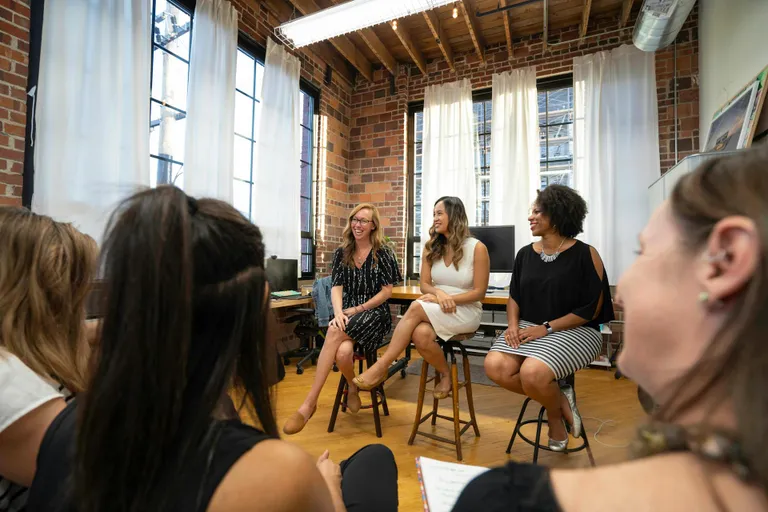
Women sitting on chairs inside a room | Source: Pexels
We prepared a small gathering, aiming to create a space not just for sharing but to highlight the real impact of community support.
When Kris returned, he was visibly tired but seemed to carry a more reflective aura than when he left that morning. He walked into our living room and found it filled with unfamiliar but friendly faces.

A living room | Source: Pexels
Each person took a moment to share their story, explaining how crucial the food bank had been in their lives. The atmosphere was warm, communal, and heartfelt, far from accusatory.
Listening intently, Kris looked around at everyone, taking in their stories. After the last guest spoke, there was a heavy silence that filled the room.
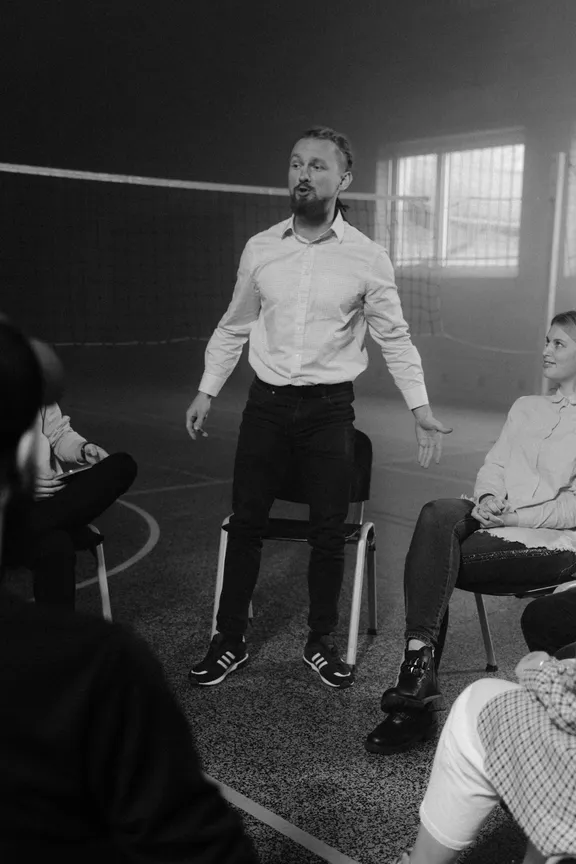
A man speaking at a gathering | Source: Pexels
Kris finally broke it, his voice low but clear, “I never realized,” he admitted, his eyes scanning the room. “I saw the food bank as a way to save, not as a resource for survival.”
It was a moment of genuine realization for him. He began to understand the true purpose of the food banks and the real impact his actions had on our community.
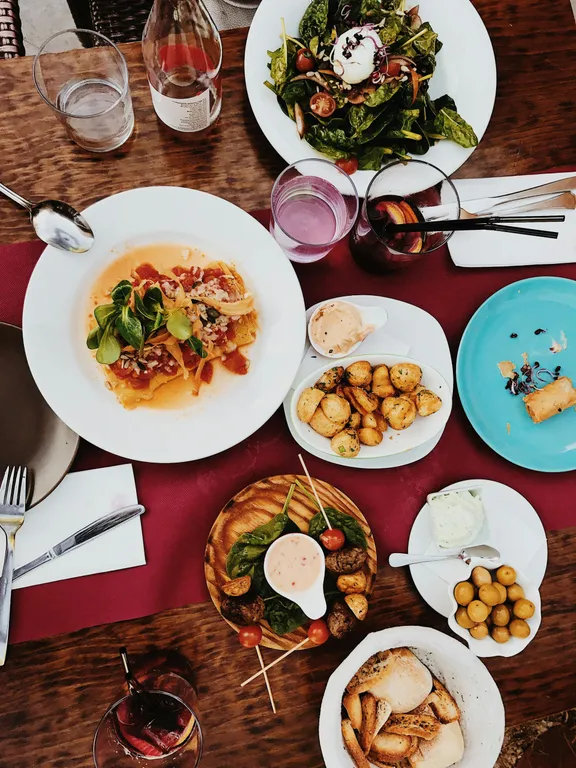
Food served on the table | Source: Pexels
It wasn’t just about the food; it was about the people who really needed that help to make it through another day.
Moved by everything he had learned that day, both at the food bank and from the stories shared in our living room, Kris came up with an idea that was both generous and thoughtful.
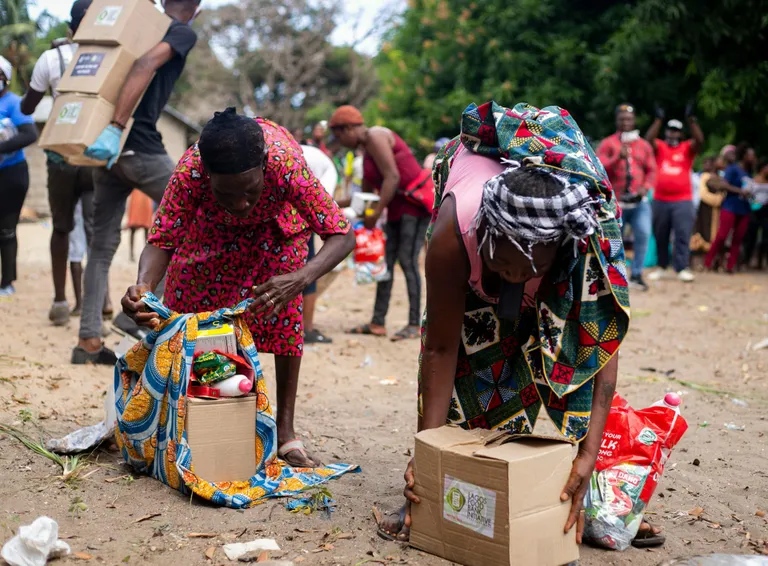
People picking up supplies packed in a cardboard box | Source: Pexels
As the room quieted down, he spoke up. “I’ve been thinking,” he started, looking around at all the attentive faces, “about all the ‘savings’ I thought I was making by getting food from the food bank. It’s clear now how much these resources are actually needed by others. I want to match what I thought we were saving with donations. We can afford it, and clearly, it’s needed.”
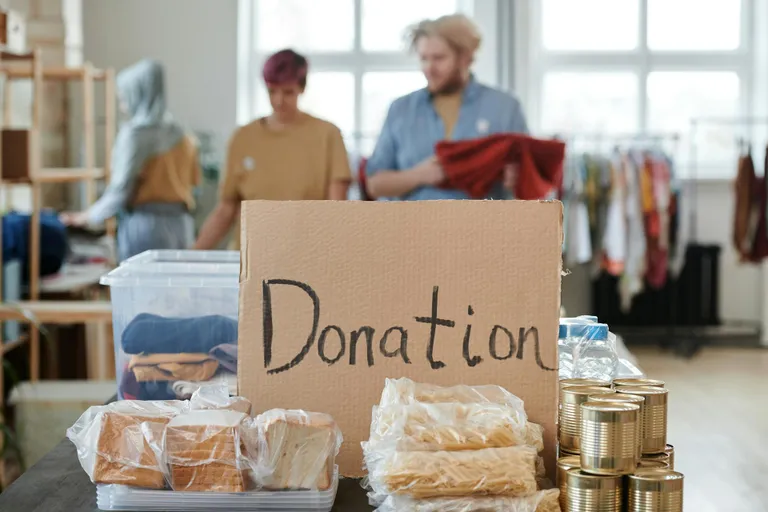
Boxes of food placed next to a cardboard inscription reading “Donation” | Source: Pexels
His words brought smiles and nods of approval from everyone gathered. It felt like a turning point, not just for him but for us as a couple and our role in the community.
As people started to leave, they thanked us for the gathering. There was a sense of community and solidarity that hadn’t been there before. We all felt connected by a shared purpose.
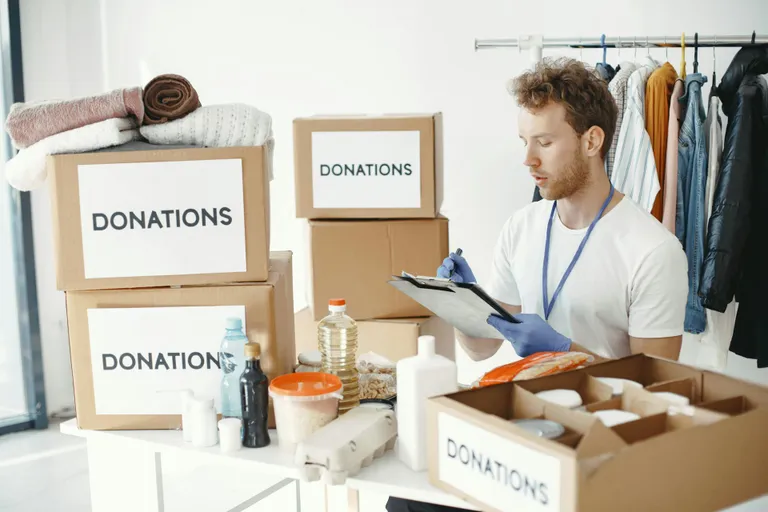
A charity worker checking donation boxes | Source: Pexels
Before everyone dispersed, we made plans to volunteer at the food bank together. It wasn’t just going to be Kris; it was going to be both of us.
This lesson had evolved into a commitment for us as a couple to be more involved and to help where we could genuinely make a difference.

Volunteers at a food bank packing items inside cardboard boxes | Source: Pexels
The following weekend, Kris and I started our first day as volunteers at the food bank. It was different from his previous visits. This time, we were both there not to take, but to give back.
We helped sort out donations, organized the pantry, and even got to know more about the regular volunteers and the people who relied on the food bank’s help.
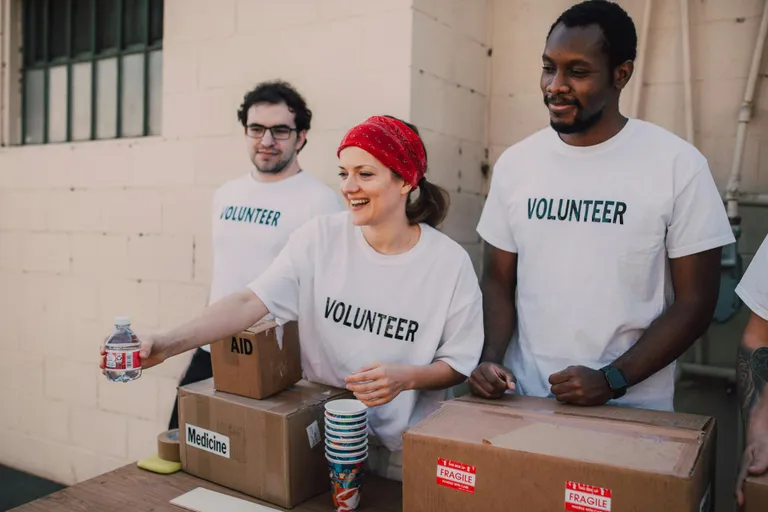
People donating goods | Source: Pexels
Seeing Kris interact with the visitors, listening to their stories, and genuinely engaging with the other volunteers, I felt a profound sense of pride and love. What started as a lesson had blossomed into something much bigger—a true community effort.
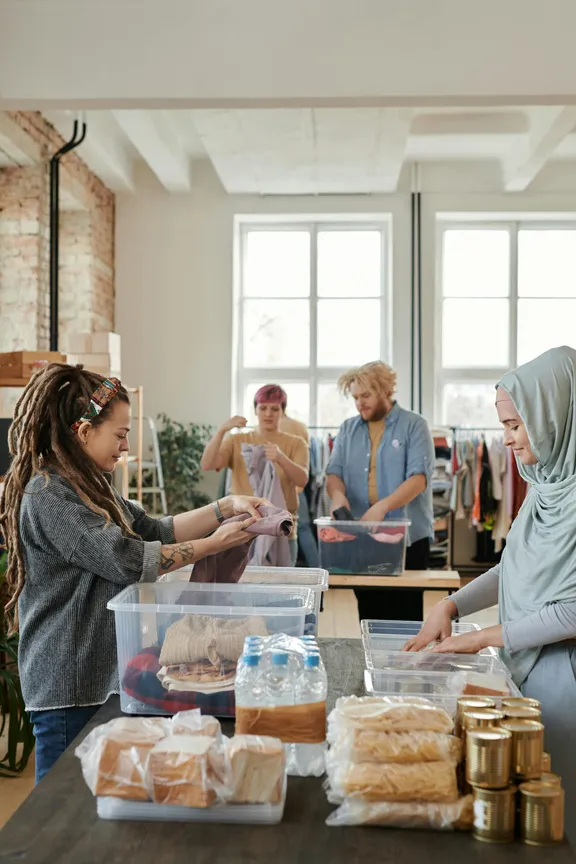
People sorting donations | Source: Pexels
This experience changed us. It reminded us that sometimes understanding and compassion need a little push to come to the surface. By stepping into the lives of those around us, we can see the world through their eyes and grow in ways we never imagined.

A man driving a car | Source: Pexels
As we drove home that day, Kris squeezed my hand and said, “Thank you for opening my eyes, Celine. Let’s keep this going.” And we have, ever since that day, not just contributing financially but being an active part of the solution.

A couple hugging | Source: Shutterstock
We learned that it’s not just about giving back but also about understanding the real needs of our community and acting to support them. This wasn’t the end of a lesson; it was the beginning of a new chapter for us, one where we contribute to the world around us in a meaningful way.

Food and drinks inside a carton box | Source: Pexels